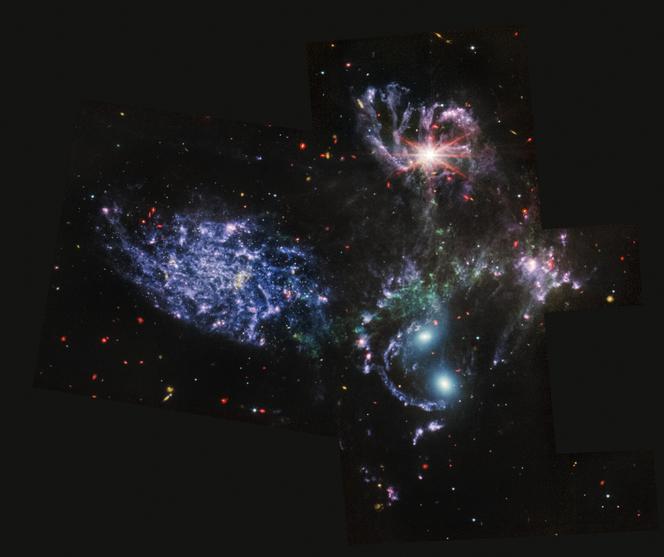


The new astronomy star: That's the nickname for the James Webb Space Telescope (JWST), a $10 billion (€9.3 billion) jewel that the American, European and Canadian space agencies launched on Christmas Day 2021. With its 6.5-meter diameter mirror, it is by far the largest telescope ever sent into space. Observations began in the summer of 2022 and, now that the first annual cycle has come to an end, publications of spectacular images have been rolling in like waves on the beaches of a scientific ocean. The time has come for an initial assessment.
A preliminary question: How well does this ultra-sophisticated machine work? After the Hubble Space Telescope, JWST's predecessor, was launched into orbit in 1990, researchers were shocked to discover a kind of myopia, which had to be corrected in orbit in 1993, thanks to a mission by the US space shuttle Endeavour. This was not an option for the James Webb, which was positioned 1.5 million kilometers from the Earth and could not be serviced. Fortunately, no anomalies were reported during commissioning.
On the contrary, astrophysicists have two reasons for satisfaction. The first is "the near-perfect launch achieved by Ariane-5," said Pierre-Olivier Lagage, research director at the French Atomic Energy and Alternative Energies Commission (CEA) and co-director of one of the James Webb's four instruments. "Thanks to this, we've been able to save on fuel and have reserves for 26 years." Far more than the five to 10 years originally hoped for. All the more reason to pamper the machine and "pay close attention to the risk of breakdowns," Lagage added. "Operations are carried out in such a way as to avoid as far as possible areas where micrometeorites could strike the mirror."
The second reason for rejoicing comes from the telescope's performance, said David Elbaz, also an astrophysicist at CEA: "The machine's technical capabilities are completely on target, with even slightly better characteristics than expected." And is the James Webb, which is supposed to trace the first sources of light in the cosmos, as well as tackling the atmospheres of exoplanets, also living up to expectations on the scientific front? Elbaz gave a positive answer: "Are we going further than Hubble ever did? Yes. Are we seeing planets orbiting other stars? Yes. Can we characterize their atmosphere? Yes."
So there were discoveries that were expected. And the unexpected too, which has perhaps made the astrophysicist even more enthusiastic: "We always expect that some part of the observations will not correspond to what we knew or predicted, but here, the surprises appeared from the very first images." Elbaz has listed five surprises, the sum of which somewhat shakes up the Standard Model, which describes the Universe, its history and, in particular, its beginning.
You have 75% of this article left to read. The rest is for subscribers only.
